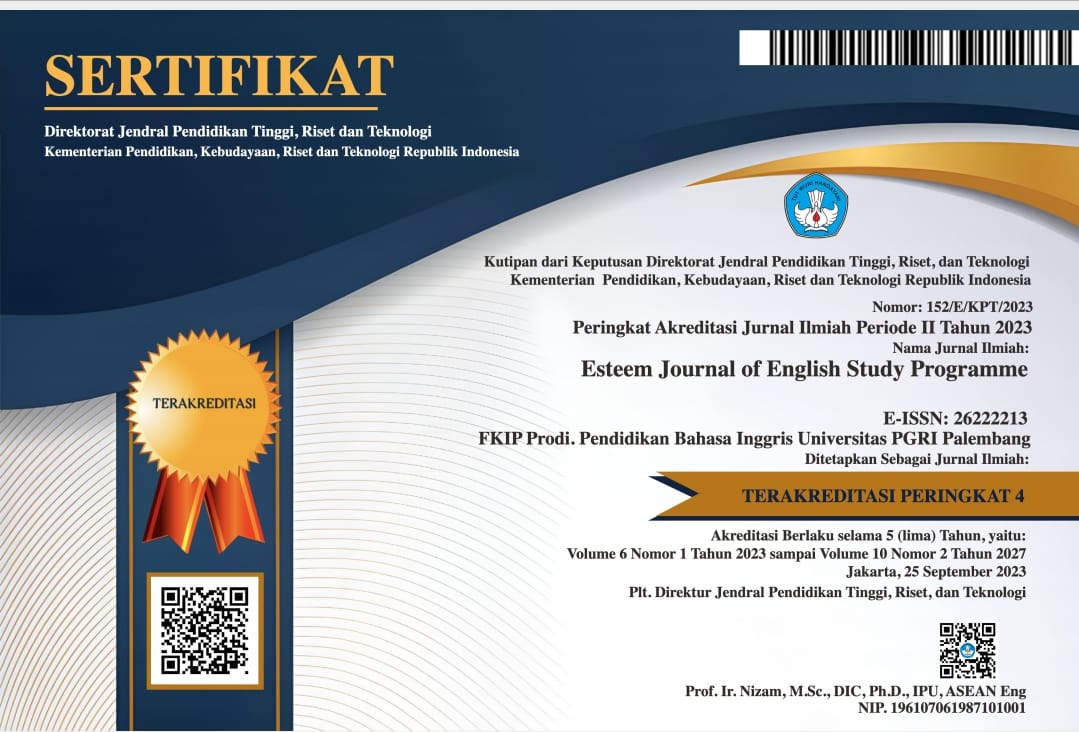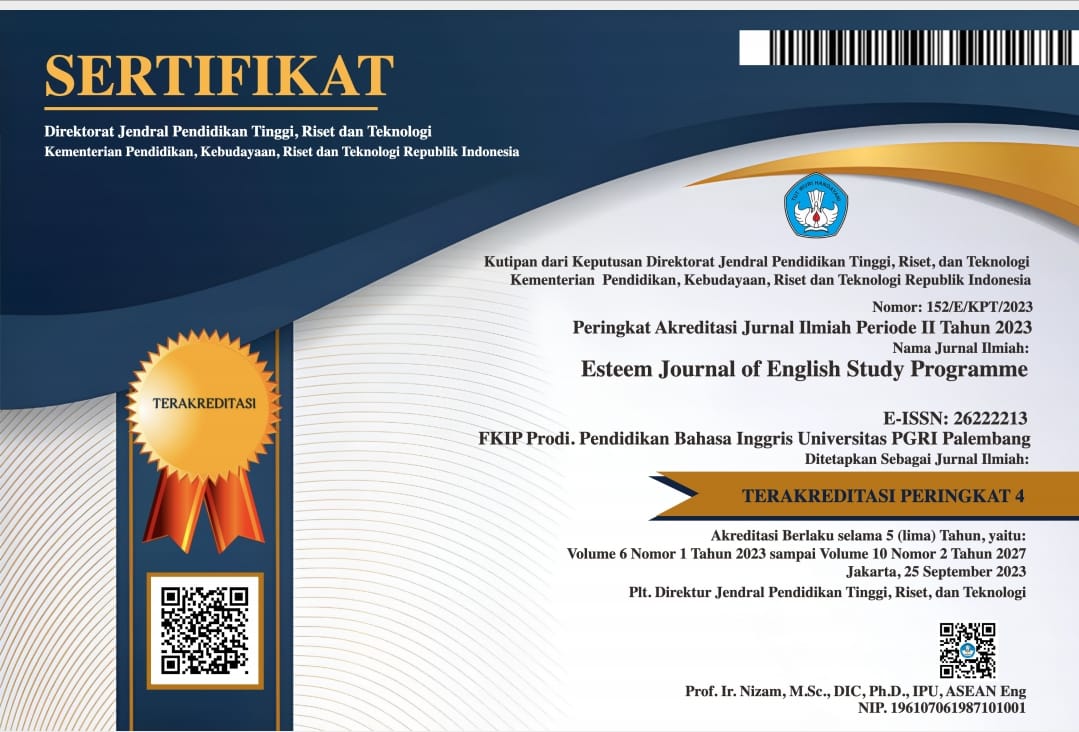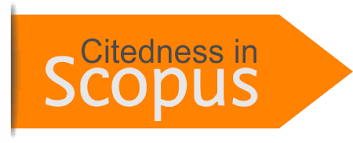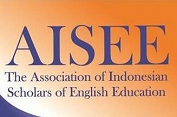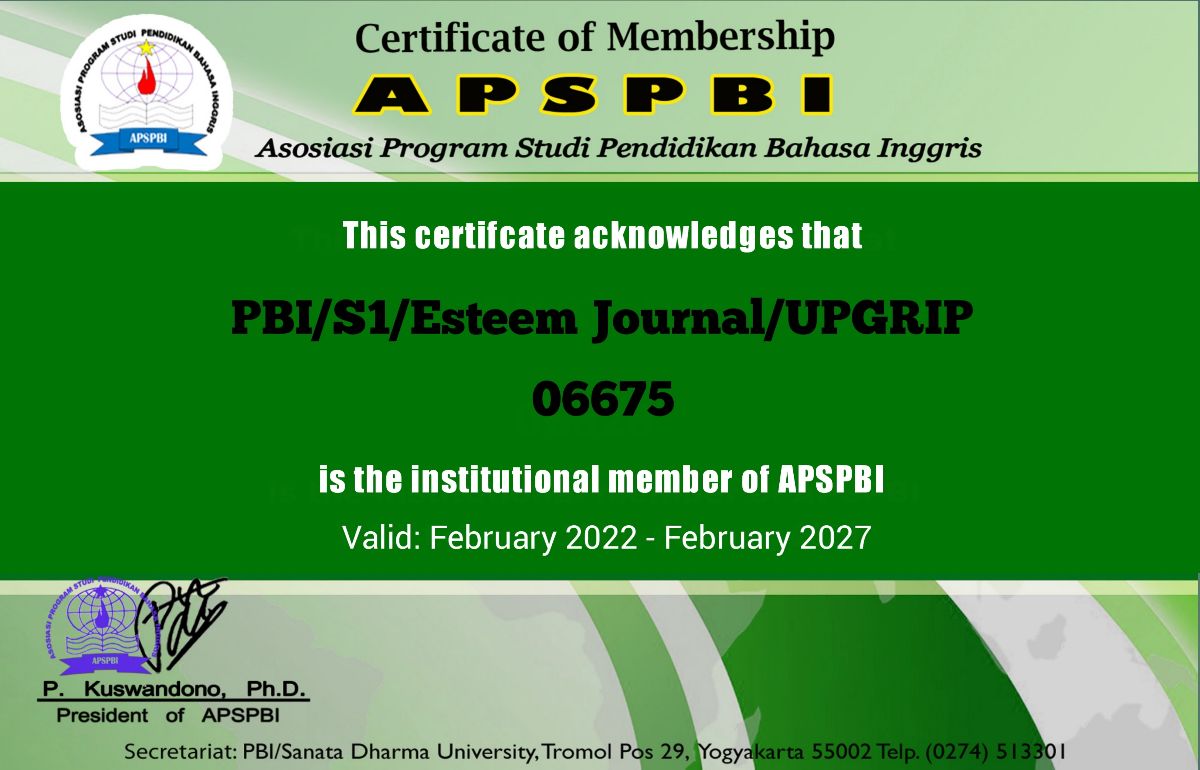NEARPOD WEBSITE STRATEGY IN INCREASING STUDENTS' LISTENING ABILITY
DOI:
https://doi.org/10.31851/esteem.v6i1.10220Keywords:
Nearpod Website, Listening AbilityAbstract
The main problem of this study was " is there any significant effect on the students' listening achievement after being taught by using Nearpod and those who are not?. The method used in this study was quantitative or quasi-experimental method. The data collected by using written test and online based test on Nearpod Website. The data were analyzed through matched t-test formula and percentage of analysis to find out the effectiveness of teaching listening through Nearpod and Conventional Method. It was found out that the value of t-obtained was 8.12 where the value of the t-table at 0.05 significant level for two tailed with 18 (df) was 2.100. It means that there was significant difference between the result of pre-test and post-test especially the experimental class. It can be stated that the null hypothesis (Ho) was rejected and the alternative hypothesis (Ha) was accepted. It is indicated that Nearpod Website Strategy could increase students’ listening ability.
References
Aldiab, A. (2019). Utilization of Learning
Management Systems (LMSs) in Higher
Education System: A case review for
Saudi Arabia. Energy Procedia.
Arikunto, S.(2012). Prosedur Penelitian: Suatu Pendekatan Praktek. Jakarta: Rineka Cipta.
Bite, V. (2013). Listening : An Important Skill
and Its Various Aspects. The Criterion : An International Journal in English.
Bohlke, D. (2014). Preparing Students for
Success with Pre-Listening Tasks. USA
: Longman.
Brown, H. Douglas. 2004. Language
Assessment:Principles and Classroom
Practices. San Fransisco State
University
Cristol, D., & Gimbert, B. (2013). Academic
Achievement in BYOD Classrooms.
Science Proceedings.
Daniela, L., Visvizi, A., Gutiérrez-Braojos, C.,
& Lytras, M. D. (2018). Sustainable
higher education and Technology-
Enhanced Learning (TEL).
Sustainability: Switzerland.
Emery, S. (2012). Factors for Consideration
when Developing a Bring Your Own
Device (BYOD) Strategy in Higher
Education.
Field, J. (2003). Promoting perception:
Lexical segmentation in L2 listening.
ELT Journal.
Fraenkel, J. R., Wallen, & Norman, E. H.
(2012). How to design and evaluation
research 8th ed. New York, NY.
Goh, C.,& Taib, Y.(2006). Metacognitive
instruction in listening for young learners. English Language Teaching.
Hamouda, A. (2013). An Investigation of
Listening Comprehension Problems
Encountered by Saudi Students in the
EL Listening Classroom. International
Journal of Academic Research in
Progressive Education and
Development.
Helgesen, M. And S. Brown. (2007). Practical
English Language Teaching. London: Pearson Longman Inc.
Hennink, M., Hutter, I. & Bailey, A. (2010).
Qualitative Research Methods. SAGE
H. Douglas Brown,
Language Assessment Principle and Classroom Practices. San Francisco: Longman.
Hermansyah.(2021). Self Talk Strategy in Improving the Eleventh Grade Students’ Speaking Ability. Journal of English Language Teaching and Applied Linguistics.
I. S. P. Nation and J. Newton, (2009).
Teaching ESL/EFLListening and
Speaking Routledge : New York.
Iskandar.(2008). Metodologi Penelitian Pendidikan dan Sosial: Kuantitatif dan Kualitatif. Ciputat, Jakarta.Gaung Persada press (GP Press)
Jaya, Aswadi. (2016). Fishbowl Technique and Learning Interest Effects on Speaking Achievement of SMK Sembawa. Journal of EDUTICON.
Kay, R., & Schellenberg, D. (2019).
Comparing BYOD and one-to-one
laptop programs in secondary school classrooms: A review of the literature. Society for Information Technology, 2019.
Nunan, David. (2003). Practical English
language Teaching. New York: McGraw-Hill Comtempory.
Perez, J. E. (2017). Resource review: Nearpod. Journal of the Medical Library Association. retrieved from: DOI: dx.doi.org/10.5195/jmla.2017.121
Pourhosein, G. A., & Ahmadi, S. M. (2011).
The Effect of Text Familiarity on
Iranian EFL Learners’ Listening
Comprehension. Journal of Language
Teaching and Research.
Schwartz,D. (2004). Listening out of the box:
New perspectives for the
workplace. International Journal of
Listening.
Sugiyono. (2014). Metode Penelitian
Kuantitatif Kualitatif dan R&D.
Pendidikan Bandung.
Downloads
Published
Issue
Section
License
Copyright (c) 2022 Anisa Turahmah, Djunaidi Djunaidi, Aswadi Jaya

This work is licensed under a Creative Commons Attribution-NonCommercial-ShareAlike 4.0 International License.
Copyright Notice
Authors who publish with this journal agree to the following terms:
In order to assure the highest standards for published articles, a peer review policy is applied. In pursue of the compliance with academic standards, all parties involved in the publishing process (the authors, the editors and the editorial board and the reviewers) agree to meet the responsibilities stated below in accordance to the Journal publication ethics and malpractice statement.
Duties of Authors:
- The author(s) warrant that the submitted article is an original work, which has not been previously published, and that they have obtained an agreement from any co-author(s) prior to the manuscript’s submission;
- The author(s) should not submit articles describing essentially the same research to more than one journal;
- The authors(s) make certain that the manuscript meets the terms of the Manuscript Submission Guideline regarding appropriate academic citation and that no copyright infringement occurs;
- The authors(s) should inform the editors about any conflict of interests and report any errors they subsequently, discover in their manuscript.
Duties of Editors and the Editorial Board:
- The editors, together with the editorial board, are responsible for deciding upon the publication or rejection of the submitted manuscripts based only on their originality, significance, and relevance to the domains of the journal;
- The editors evaluate the manuscripts compliance with academic criteria, the domains of the journal and the guidelines;
- The editors must at all times respect the confidentiality of any information pertaining to the submitted manuscripts;
- The editors assign the review of each manuscript to two reviewers chosen according to their domains of expertise. The editors must take into account any conflict of interest reported by the authors and the reviewers.
- The editors must ensure that the comments and recommendations of the reviewers are sent to the author(s) in due time and that the manuscripts are returned to the editors, who take the final decision to publish them or not.
Authors are permitted and encouraged to post online a pre-publication manuscript (but not the Publisher final formatted PDF version of the Work) in institutional repositories or on their Websites prior to and during the submission process, as it can lead to productive exchanges, as well as earlier and greater citation of published work (see The Effect of Open Access). Any such posting made before acceptance and publication of the Work shall be updated upon publication to include a reference to the Publisher-assigned DOI (Digital Object Identifier) and a link to the online abstract for the final published Work in the Journal.


















